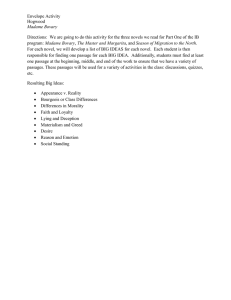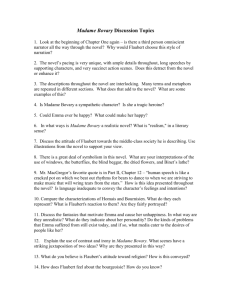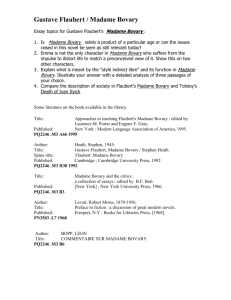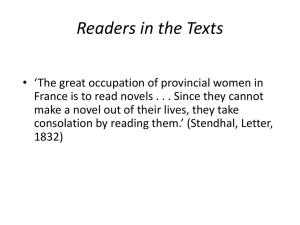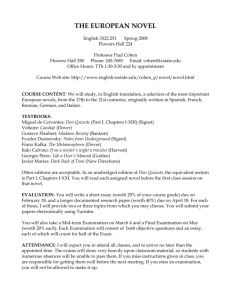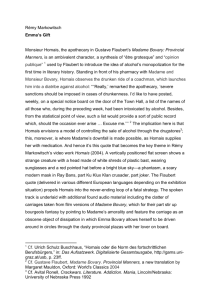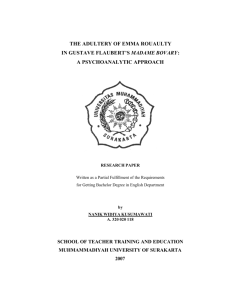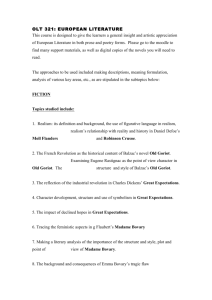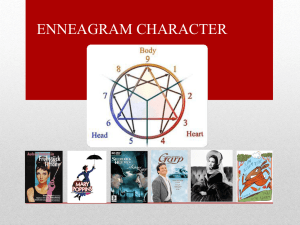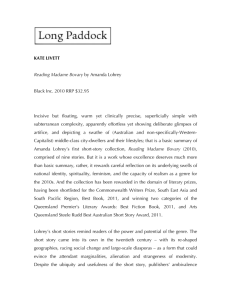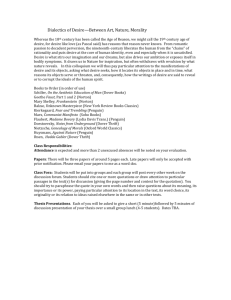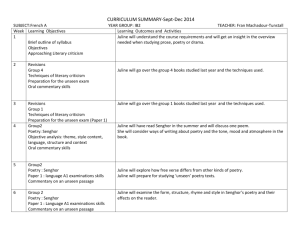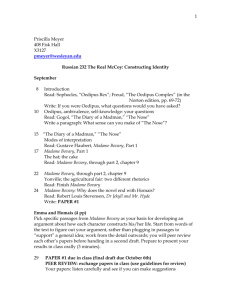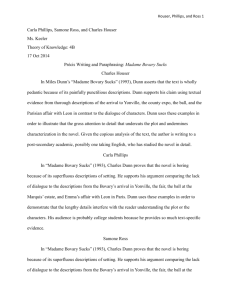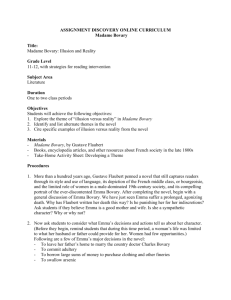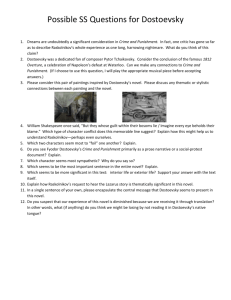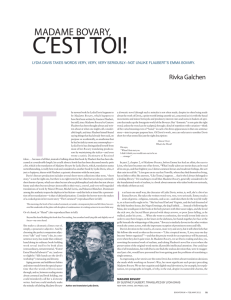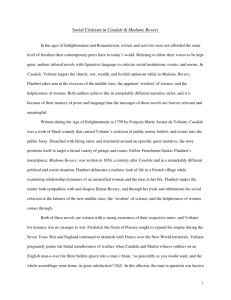possible SS questions on MADAME BOVARY
advertisement
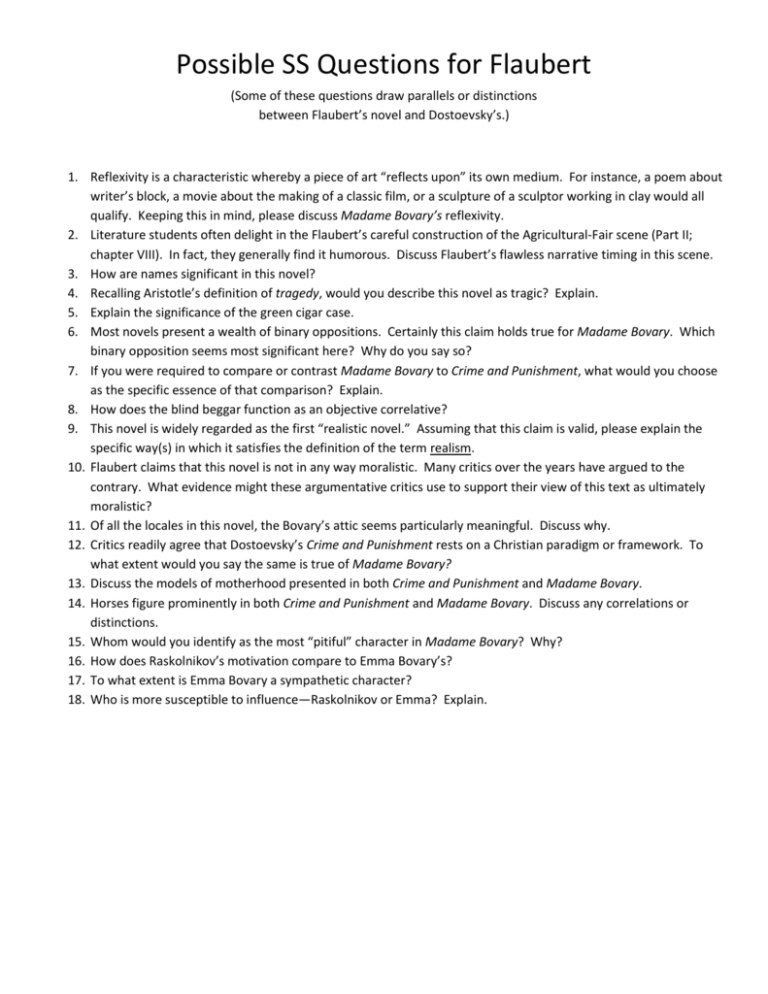
Possible SS Questions for Flaubert (Some of these questions draw parallels or distinctions between Flaubert’s novel and Dostoevsky’s.) 1. Reflexivity is a characteristic whereby a piece of art “reflects upon” its own medium. For instance, a poem about writer’s block, a movie about the making of a classic film, or a sculpture of a sculptor working in clay would all qualify. Keeping this in mind, please discuss Madame Bovary’s reflexivity. 2. Literature students often delight in the Flaubert’s careful construction of the Agricultural-Fair scene (Part II; chapter VIII). In fact, they generally find it humorous. Discuss Flaubert’s flawless narrative timing in this scene. 3. How are names significant in this novel? 4. Recalling Aristotle’s definition of tragedy, would you describe this novel as tragic? Explain. 5. Explain the significance of the green cigar case. 6. Most novels present a wealth of binary oppositions. Certainly this claim holds true for Madame Bovary. Which binary opposition seems most significant here? Why do you say so? 7. If you were required to compare or contrast Madame Bovary to Crime and Punishment, what would you choose as the specific essence of that comparison? Explain. 8. How does the blind beggar function as an objective correlative? 9. This novel is widely regarded as the first “realistic novel.” Assuming that this claim is valid, please explain the specific way(s) in which it satisfies the definition of the term realism. 10. Flaubert claims that this novel is not in any way moralistic. Many critics over the years have argued to the contrary. What evidence might these argumentative critics use to support their view of this text as ultimately moralistic? 11. Of all the locales in this novel, the Bovary’s attic seems particularly meaningful. Discuss why. 12. Critics readily agree that Dostoevsky’s Crime and Punishment rests on a Christian paradigm or framework. To what extent would you say the same is true of Madame Bovary? 13. Discuss the models of motherhood presented in both Crime and Punishment and Madame Bovary. 14. Horses figure prominently in both Crime and Punishment and Madame Bovary. Discuss any correlations or distinctions. 15. Whom would you identify as the most “pitiful” character in Madame Bovary? Why? 16. How does Raskolnikov’s motivation compare to Emma Bovary’s? 17. To what extent is Emma Bovary a sympathetic character? 18. Who is more susceptible to influence—Raskolnikov or Emma? Explain.

